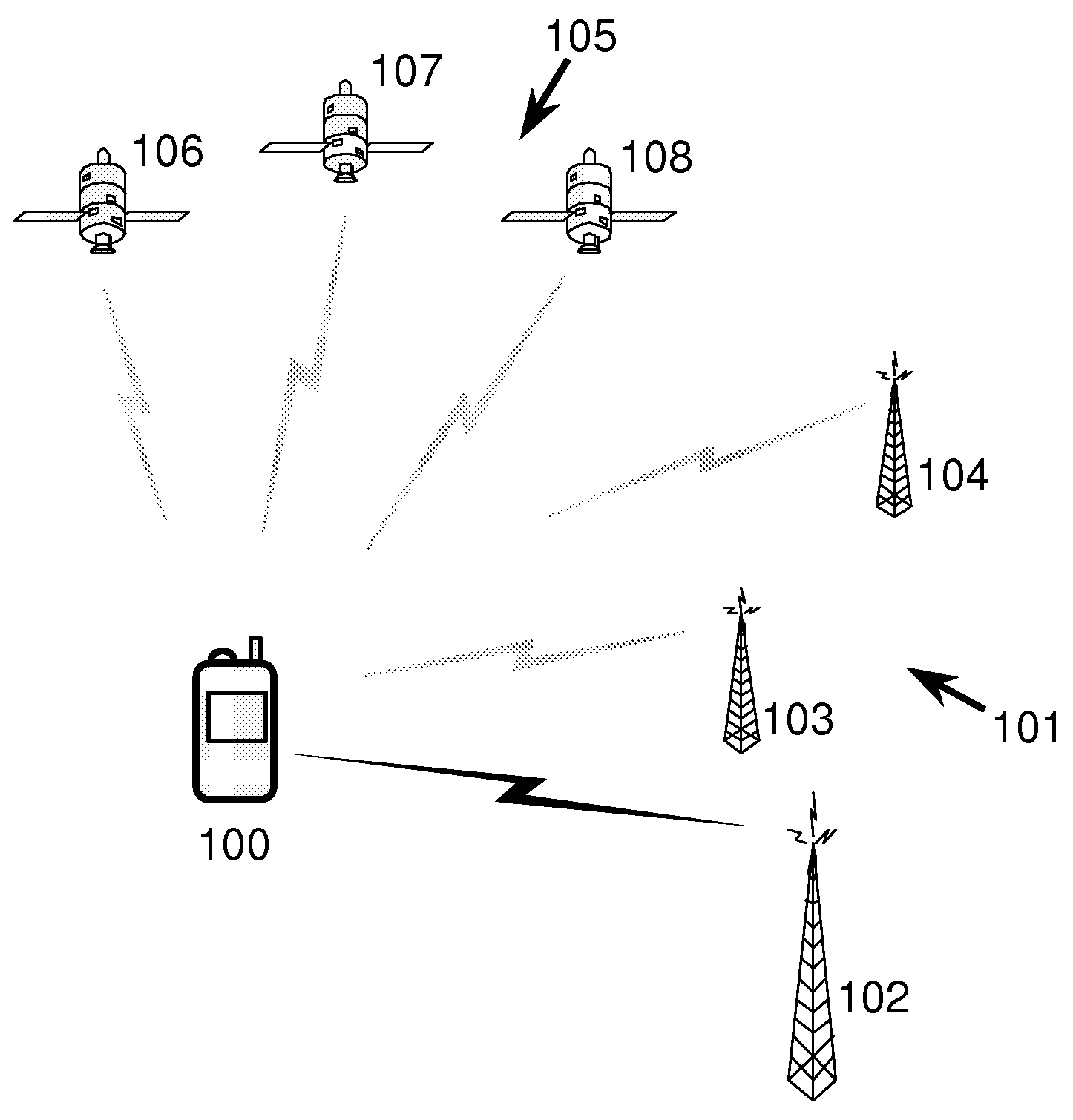Associating a Universal Time with Received Signal
- Summary
- Abstract
- Description
- Claims
- Application Information
AI Technical Summary
Benefits of technology
Problems solved by technology
Method used
Image
Examples
Embodiment Construction
[0070]FIG. 1 shows a terminal 100 of a GSM communications network 101 with associated serving base transceiver station 102 and neighbouring base transceiver stations 103 and 104. The terminal 100 has a communications module including a receiver 201 for receiving the transmissions from the network 101, but it also has a receiver 208 for receiving GPS signals from a satellite positioning system 105, specifically from the satellites 106, 107,108 etc.
[0071]The terminal 100 is shown in more detail in FIG. 2. The receiver 201 of the communications module receives the signals from communications network 101 via an antenna 202, and transfers base-band I and Q samples (i.e. in-phase and quadrature-phase) via link 203 to a processor 204. The processor is running a software program 205 which is able to recognise the arrival of an identified component in the signal, in this case the ETS. The processor 204 receives clock signals, count data, and pulses from counter 206 via a bi-directional link ...
PUM
 Login to View More
Login to View More Abstract
Description
Claims
Application Information
 Login to View More
Login to View More - R&D
- Intellectual Property
- Life Sciences
- Materials
- Tech Scout
- Unparalleled Data Quality
- Higher Quality Content
- 60% Fewer Hallucinations
Browse by: Latest US Patents, China's latest patents, Technical Efficacy Thesaurus, Application Domain, Technology Topic, Popular Technical Reports.
© 2025 PatSnap. All rights reserved.Legal|Privacy policy|Modern Slavery Act Transparency Statement|Sitemap|About US| Contact US: help@patsnap.com



